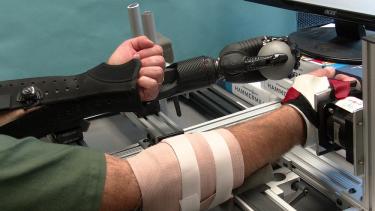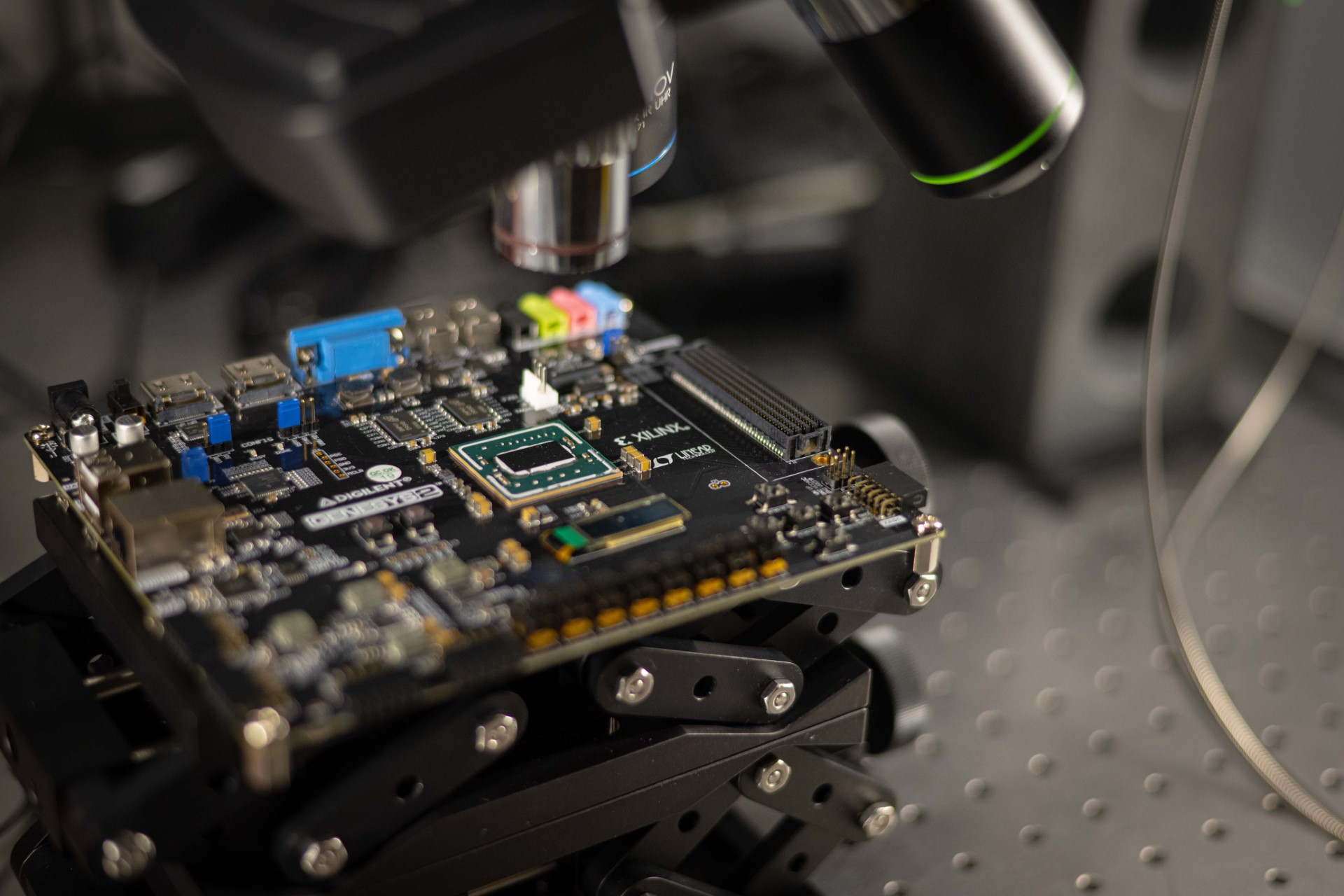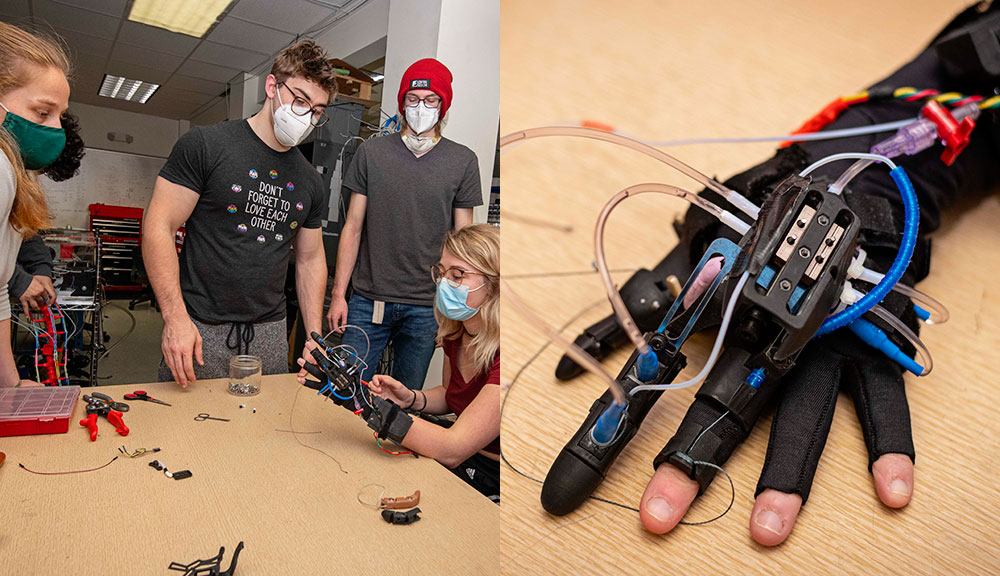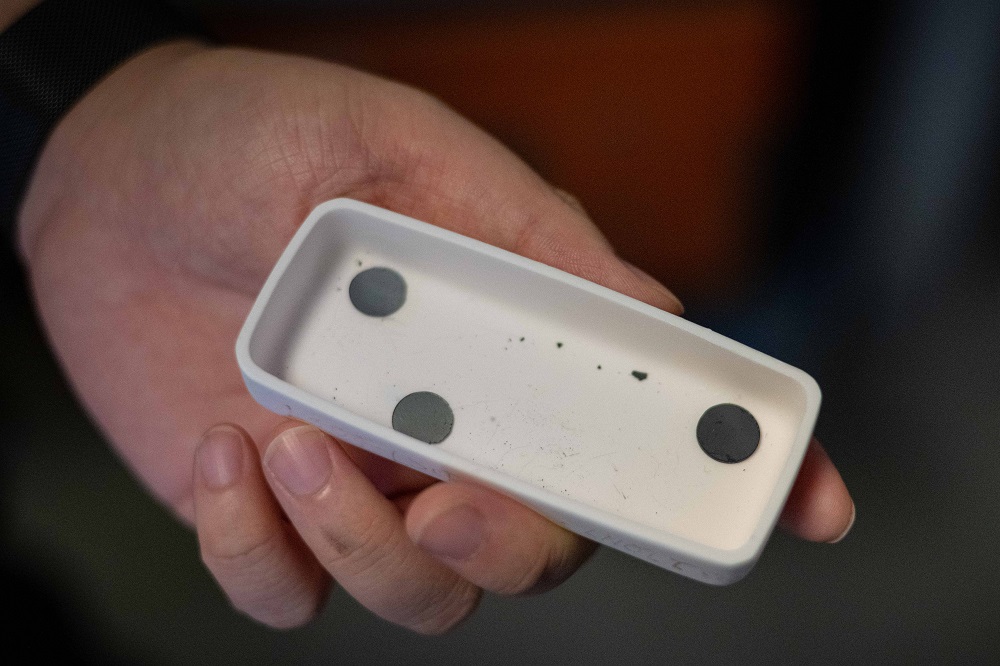A research team at Worcester Polytechnic Institute (WPI) hopes to give hand-wrist prostheses the ability to move more naturally by enabling a hand and wrist to work simultaneously—known as two degrees of freedom—using electrical impulses generated by remnant muscles in the forearm. With traditional prostheses, only one element—either the hand or the wrist—can be in motion at any one time.
In part, the research is aimed at providing better prosthesis options for returning soldiers with amputations of the hand and wrist who have found it either difficult or impossible to perform a wide range of daily tasks with current one-degree-of-freedom hand-wrist prostheses.
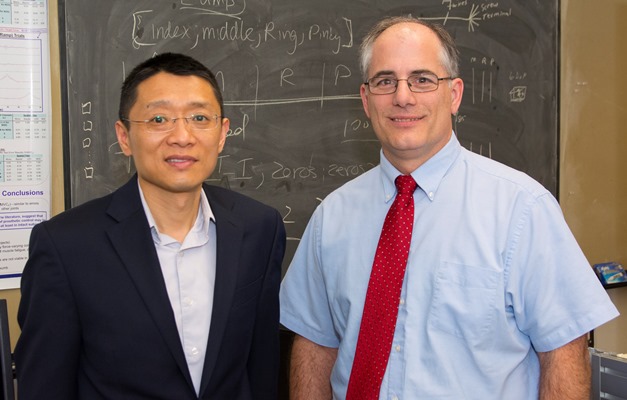
WPI researchers Xinming Huang, left, and Edward Clancy.
The research is being done by co-principal investigators Edward Clancy and Xinming Huang, both professors of electrical and computer engineering at WPI. Their work is funded by a two-year subaward of $712,812 from Liberating Technologies Inc. (LTI) of Holliston, Mass., a leading supplier of upper-limb prosthetic devices for adults and children. The National Institutes of Health has given LTI a $1.4 million grant to help solve these problems.
The researchers say their goal is to make it possible for hand-wrist prostheses to more closely duplicate the natural synchronized action of the human hand and wrist. When reaching for a glass of water, for example, the wrist turns to align the hand while fingers spread to encircle the glass. For an upper-limb amputee using existing prostheses, that simple action is far more cumbersome.
Clancy, director of WPI’s Laboratory for Sensory and Physiologic Signal Processing, is responsible for system design and developing advanced control algorithms for device operation, while Huang works on instrumentation and signal processing. They are conducting the research at both WPI and LTI.
The work is currently focused on how to translate signals picked up from muscle activity in the forearm into appropriate movements of the hand and wrist prostheses. They began by collecting data from 64 or more electrodes, but recognizing that a device with that many inputs could be burdensome or impractical, they are attempting to achieve the same effect with as few as four electrodes while also improving functionality.
“We want to be able to control two degrees of freedom while making instrumentation that is really tiny and easy to apply,” Clancy said.
